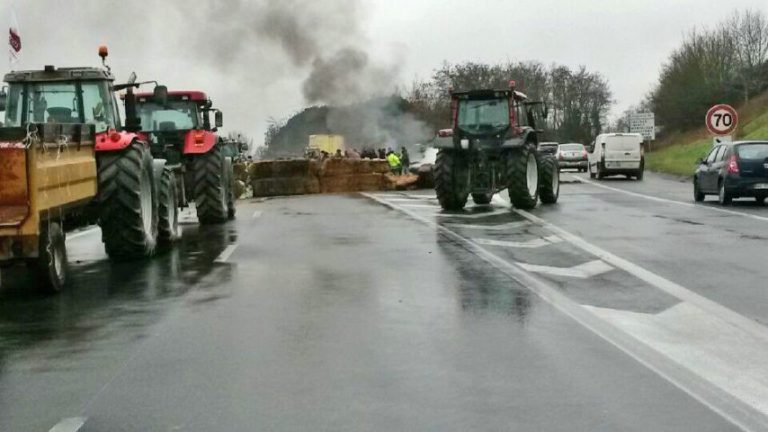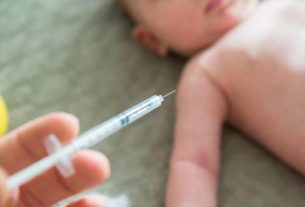AGRICULTURE: As improbable as it may seem, it is in the North that the only French farm to produce camel milk is located. A rare and expensive product with impressive nutritional properties
- In Feignies, in the North, an animal enthusiast raises camels and dromedaries.
- On his farm, called La Camélerie, he is the only one in France to produce camel milk at the rate of 25,000 litres a year.
- It is a rare and expensive product, whose nutritional properties are far superior to cow’s milk.
In Feignies, near Maubeuge, in the North, Julien Job’s farm stands out from the others. His farm is unique in France, and if you pass by one day, you will quickly realize it at the sight of the animals grazing quietly in his pastures. 20 Minutes went to meet this animal enthusiast, the only French producer of camel milk.
Baptized the Camelerie, Julien Job’s farm is lost in the middle of green meadows crossed by a tiny road, on which it is difficult to meet. If the address does not include a number, it is nevertheless impossible to make a mistake, two imposing camels indicating to you better than a GPS the arrival at your destination. Obviously, it rains in torrents, and the place, which could be bucolic, is transformed into a field of mud. But you quickly forget to pay attention to your shoes when you almost come face to face with a pair of llamas, a couple of miniature donkeys, a few zebus, yaks and other mammals. “The camels are inside. They groan to go out and they groan to go back because it’s raining”, says the owner of the place, leading us under a huge Bedouin tent.
“Camelids are everywhere in the world”
When we are surprised to see camels in the North, Julien immediately breaks the clichés: “There are camelids everywhere in the world. We forget that in France too we used dromedaries, in particular, to build railways, ”he says. Except that in France, as in other countries, notably Australia, we abandoned this animal after having replaced it. Basically, Julien Job is a dealer in atypical animals, mainly for zoos: big cats, zebras, monkeys and, therefore, camels. “Fifteen years ago, I imported a white camel from Russia for a French park. She arrived injured so we kept her,” he recalls. It was she who gave him the love of camelids. “It fascinates me to see all that you can do with a camel,” insists Julien. It’s tougher, more docile than a horse, and much cheaper to breed. »
Walk the tourists, rent for cinema or television, sale of specimens. Everything or almost, except the butcher’s shop. And now the milk. We leave the tent to go to a building from which come intense blathering. In paddocks lined with straw, dozens of camels look at us curiously. “Here, we have all the females who have just given birth to their young and those who are still pregnant. There, it’s a baby who was born yesterday, ”explains Julien, pointing to a handsome fellow slumped against his mother’s side. This is also where the milking takes place, every day at 6 p.m. In terms of yield, we are far from cows, with only five litres per animal per day. “This is one of the reasons for the high price of milk, around 15 euros per litre”, recognizes the breeder.
A discreet production of 25,000 liters per year
Rare and precious liquid, which we taste with respect. Nevertheless, our taste buds are not confused, because compared to cow’s milk, the difference is not in the taste. “Camel milk is low in lactose and bad cholesterol and therefore better tolerated. It contains three times more vitamin C and ten times more iron”, Julien list. It is also credited with medicinal virtues, as confirmed by CIRAD (Centre for international cooperation in agronomic research for Development): “Camel milk is […] a remedy for many ailments” and is used “in the treatment of tuberculosis _human, diabetes mellitus, liver disease, respiratory disorders, diarrhoea in children, gallstones, nervous disorders, general fatigue and gastric ulcers”.
Except that with its 80 animals, and at the rate of a single baby every two years, the Camélerie is not about to flood France with its annual production of 25,000 litres. “Everything has to be done, the sector does not exist and I am not sure that farmers are interested in getting started. It’s too different from what they do and not profitable enough,” observes Julien. There are some who have smelled a good deal and who have camels galore: “I went to Saudi Arabia to explain my milk pasteurization techniques to them and I came back with the proposal to help them sell in France. the milk of 6,000 camels,” explains Julien. But let the cows be reassured, the camelids will still be light years away from approaching their production capacity, estimated at 23 billion litres in France in 2020.




